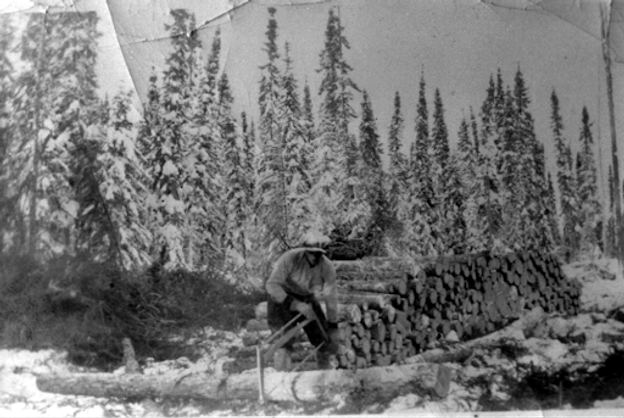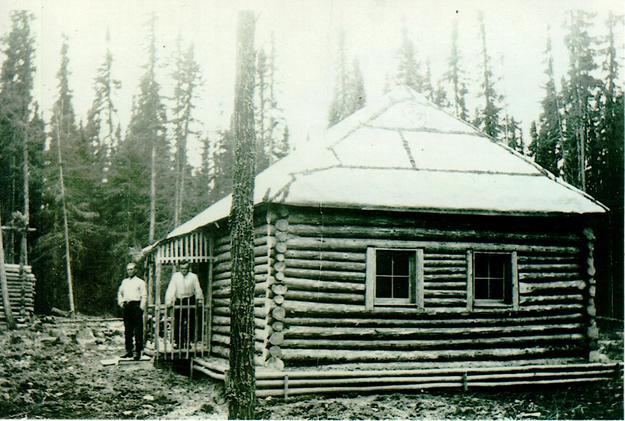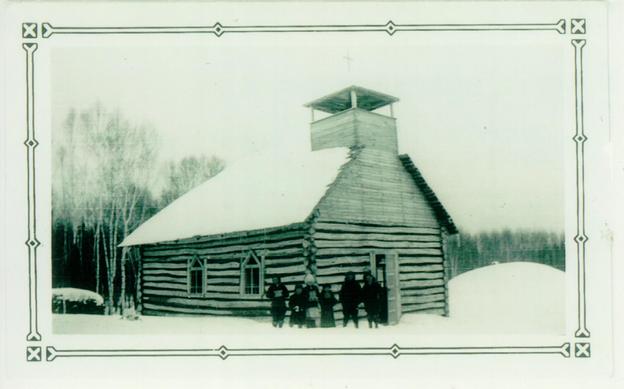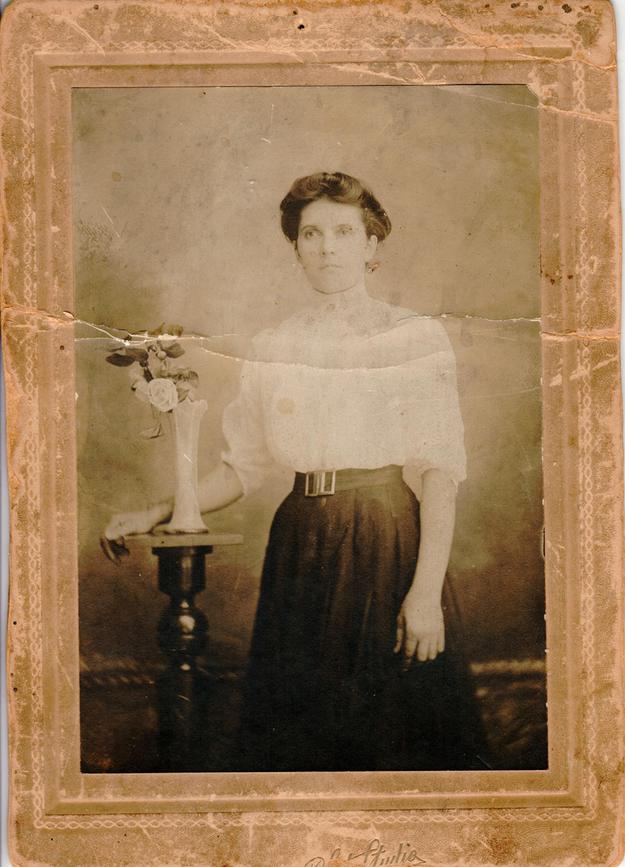Rudy Bies was born in Ontario in 1938 to Slovak parents as one of seven brothers and sisters. He spent his first 19 years on the Homestead in Bradlo, Ontario. Rudy has been practicing professional engineering for over 40 years and has had long career at Ontario Hydro and at Atomic Energy of Canada. As a proud Slovak Canadian, Rudy has spent countless hours researching and celebrating his heritage. He has written the 2nd edition of his book Bradlo and Other Slovak Pioneer Footprints in Northern Ontario and played an active role in the installation of the Bradlo Memorial Monument in Bradlo.
Rudy Bies’s story is part of a Global Slovakia Project- Slovak Settlers, authored by Zuzana Palovic and Gabriela Bereghazyova. The book is available for purchase via info.globalslovakia@gmail.com.
My parents Ján and Anna Bies rest in Canadian soil. The front of their tombstone is inscribed in Slovak and the back in English, a symbol of their eternal connection to the homeland.
___
Ján and Anna were born in the hilly region near Myjava in western Slovakia at the turn of the 20th century in the twilight years of the Austro-Hungarian Empire. The highlanders were known in Slovakia for their no-nonsense approach to life, iconic blue and white kroj, and high-quality plum brandy.
My father was but a boy when the WW1 was proclaimed. He almost never talked about this experience, except mentioning that his older brother sustained a serious leg injury on the battlefield. It was mother who would recall every year, on Remembrance Day, that dreadful afternoon in 1914 when a crier arrived in her village.
She was only eight years old and the people around her started to weep as the crier instructed every eligible man to make his way to the train station and leave for the front. That day, pacts were made. Brothers promised brothers that should one of them die in battle, the other would look after the family. Anna’s own family would feel the pain of loss as the war ravaged Europe. Her father returned an invalid, but her uncle would not be so lucky as to see his family again.
When the Great War ended and Austria-Hungary crumbled, life started looking up again. Czechoslovakia was founded, and it seemed that peace was restored in Europe. My father told countless stories of his adventures as a boy, a teenager, and finally as a soldier in that young republic. However, the good times would not last forever. When his dad passed away at the young age of 47, the family was plunged into hardship. Could the faraway North America be a solution?
For decades, able-bodied men from all over Slovakia were leaving to work in the mines, forests, and factories of the New World. Women were going to find jobs too, they worked as nannies and care-givers in wealthy households.
As my father considered his options, he did not have to look far for guidance. In fact, he would not be the first member of the family to cross the ocean. At the turn of the century, his own mother had journeyed to the US to work as a nanny. She only returned to Slovakia when her husband could not pass the medical exam that would have allowed him to join her.
Thanks to her adventurous spirit, the journey across the Atlantic was no untrodden path for father, who was recruited by an agent in Europe in 1927 to come and work in Western Canada as an agricultural worker. He left in the second wave of Slovak immigration to Canada and was followed by his brothers Pavel and Michal as soon as he managed to put aside enough money for their passage.
Canada became a popular destination when the United States introduced an immigration quota system in the aftermath of the war. The restrictions drastically curbed the number of incoming Eastern Europeans. Meanwhile, the so-called Railways Agreement of 1925 opened Canada up to immigration. The country began recruiting agricultural and industrial laborers from ‘non-preferred’ European countries, including Czechoslovakia. It was an opportunity my father did not hesitate to seize.
Many times over his life, father recounted the minute details of his first journey to Canada. It was an exciting experience for a young and adventurous 23-year-old man: the sea sickness, the icebergs, and the apprehension everyone faced in passing the physical examination in Antwerp, Belgium when nothing was yet certain. Without the green pass from the authorities, a person would not be allowed to board the vessel for Canada. Not everyone was as fortunate as dad. Families had to be broken up when a member, sometimes a child, was turned back to their country of origin because they failed to pass the medical exam.
Father travelled on the C.P.R. Steamer Montnairn arriving in Quebec City, Canada in May 1927. But the journey was not over. My father’s destination was on the other end of another long journey, this time by train to Luseland, Saskatchewan.
To his horror, the employer who should have greeted him at the train station was nowhere in sight when father arrived. In fact, the man never showed up. Alone in a foreign country and worn out by the travel, dad became quite distressed. His agitated behavior drew the attention of a police officer, but dad spoke no English and so he could not explain what had happened to him. The policeman took him to a restaurant where there was someone who could understand dad’s language. When his predicament was understood, the officer telephoned local farmers until he found one that could give my father work. I can hardly imagine how relieved he must have been.
During his first years, Ján worked on farms in Saskatchewan and in Northern Alberta. Although it was familiar work that he had known from home, eventually he decided to move on with life and headed to Montreal where a large Slovak community of newly landed immigrants resided. However, work did not materialize for him there, and so he departed for the great Canadian prairies of Western Canada once again.
At the time, an army of unemployed men was riding the railroads of Canada in search of work. It was at the onset of the Great Depression, and the employment conditions in the 1930s were the worst yet. My father was one of many who struggled to make ends meet.
To add insult to injury, it was November and the weather had turned bitterly cold. At Sioux Lookout in Ontario, a sympathetic train man allowed several of the men traversing the country in search of work to sleep in a box car loaded with coal. At least they could stay warm. While they were asleep, the box car that those men were in was shunted by the train crew to Hearst and left behind much to the surprise of its temporary inhabitants. They were not allowed back on the train.
Father spent a few days wandering around the town before continuing his journey. At a local store, he met several Slovaks from a nearby Slovak settlement. That was how he became aware of the Slovak colony just 11 kilometers away, which was later named Bradlo in honor of Bradlo, Slovakia which was the monumental resting place of the great Slovak hero, General Milan Rastislav Štefánik. Finally, a promising work opportunity showed up at a hydro electric project near Fraserdale, Ontario.
In order to get it, father camped on the outskirts along with hundreds of other unemployed men, hoping for Lady Luck to smile upon them. He was not alone and the gloomy days would be soothed by his brother Michal who joined him in the quest. When dad managed to get a job on the project at last, he sneaked his brother under his bed and smuggled him food from the kitchen dining room every night. Coffee, he joked, was not possible to bring.
The loneliness of single life in Canada started to wear on the brothers, and after 18 months at this lucrative job, father returned to Hrašné in Slovakia in the fall of 1931 with both his brothers. It was time to get married. A beautiful young lady had caught dad’s eye before he left for Canada in 1927. He made sure to check back with her aunt to find out if the lady was still unmarried. She was, and so he started corresponding with her from Canada. It was a success and my father married Anna Hučková in a local Lutheran church a few months after his return. For a people who had experienced the horrors and hardships of war, they did not waste time in moving forward. Soon after, their first baby, daughter Oľga, was born.
Their family continued to grow along with reasons to return to Canada. However, it was only after his arrival back in Canada that father found out his job at Fraserdale was no longer available. After all, he had left over a year ago and jobs were still more precious than gold. So, he purchased two homesteads in the Slovak settlement of Bradlo, one for himself and one for his brother Michal. His other brother Pavel had already married and started a family in Slovakia and did not aspire to return to Canada. It must have been difficult for dad who, at the time, did not make enough money to bring his wife and baby daughter over. But pride kept him from writing to Slovakia to say how bad things truly were.
Meanwhile on the other side of the ocean, mother took the initiative to join her husband in Canada and persuaded her father to fund her passage. She arrived in Canada in the summer of 1933 and was shocked at the wilderness that surrounded her. Even so, she put her fate in God's hands and God did not abandon her. The young family set up a homestead in Bradlo, and with the $70 that was left over from mother’s journey to Canada, father bought a horse for the farm. Mom used to say that it took two to succeed. It was certainly true in Bradlo, where those who brought their wives did better than those who did not. That was true for my family, too. They were stronger together.
My parents would end up living in Bradlo for most of their lives, but they made two attempts to start anew elsewhere in Canada. The first came when Slovakia became a German satellite following the 1938 Munich Agreement, a foreplay to WW2. This development would affect not just people in Slovakia, but also Slovaks who lived far away.
Slovak residents in Canada not yet naturalized were obliged to register with the Royal Canadian Mounted Police as aliens. My father was naturalized but my mother and daughter Olga were not. Olga, who was seven at the time, recalled returning home after school to find visitors there. The women were crying as was our mom. The war had started, and the family would not receive letters from relatives in Slovakia until 1941.
My father faced outright discrimination caused by the war (because Slovakia was a satellite state of the Nazis) and was forced to return to Bradlo in 1941 where he purchased a truck and worked on highway construction until 1944. In 1944, he managed to get a job working in a gold mine in Geraldton. Following an accident in the mine, in which dad was seriously injured and his partner killed, the family that was now comprised of seven children moved back to Bradlo in 1946 for good.
Bradlo proved to be a true refuge, which is how the community started in 1930, thanks to the involvement of Slovak Catholic priests in Montreal. Unemployed Slovak men were its first inhabitants, and the community grew after that. Most residents came from different parts of Slovakia. The school became the magnet where community events took place including concerts, dances, meetings, English lessons for new immigrants, and of course, a school for the children.
At its peak in the late 1930s, the community had a post office, a church, a general store, a meeting hall, a school and close to 150 inhabitants. The homesteaders helped each other to build homes and to create a community. Neighbors worked together, helped one another, and celebrated together; weddings, births of children, and funerals were all a part of the daily cycle of life in Bradlo.
Life there was also marked by the seasons. Farm chores such as the seeding of crops, haying, harvesting, zabíjačky (pig slaughter), and preparing firewood for winter formed the daily rhythm. To earn money, the men would leave home to work in the surrounding lumber camps. For long periods during the summers and winters, the women would be left alone to look after the homestead. When the homestead became snowbound, there was a constant threat of chimney fires and serious winter ailments with the children. The nearest town was 11 kilometers away, and could only be accessed by snow plane or by walking.
Growing up in Bradlo was an adventure, that’s for sure. Life did not feel like a hardship to me. I enjoyed the get togethers that my parents had with their Slovak neighbors. They were a generation that liked to sing. The earlier residents made their own music playing the accordion and the fiddle. Togetherness, dancing, singing, and laughing eased the pain of separation from homeland. Their folk songs spoke to my heart.
At school, I was taught little about Czechoslovakia and even less about Slovakia. I had no Czechoslovak nor Slovak heroes. It was from my parents and their friends that I learned about the homeland, the language, and the culture of the Slovaks. In the winter of 1949, our teacher announced that Czechoslovakia had just won the World Hockey Championship. She told me that I should be proud because my parents are Czechoslovaks. My parents certainly were beaming.
By far the major event of the year was the Christmas Concert. The excitement started with the building of the stage. Each year, father volunteered to construct it. The sound of the sawing, hammering, and the smell of the fresh sawdust created a very special atmosphere for me. Meanwhile, the teacher busily rehearsed with the students in the one-room schoolhouse that was soon transformed into a magical theater.
Letters from home arrived to update the families; some with good news and some with sad news. When a letter arrived, Bradlo families gathered to anxiously read about the developments from home. Letters usually contained family photographs, and these were delicately passed around for all to cherish. Yet, homesickness abounded. My mother often talked about saying goodbye to her most beloved family in 1933 saying, “I left behind my father, mother, brothers, and sisters to travel to a new country for a piece of bread.”
One day in May of 1956, we were working on the spring seeding at the farm when a letter arrived from Europe. It contained tragic news. Dad’s mother passed away and had already been buried. There was sadness in dad’s voice as he shared the news with us and then we just carried on working. But I know that he was heartbroken. I am sure he hoped that he could one day return triumphantly home and make his mother's life better. Like the children of many immigrants, I have never met my grandparents nor heard their voices. That part of my life will never be complete.
The last resident left Bradlo in the late 1960s. However, the descendants of Bradlo's original homesteaders have not forgotten them. Over the past 25 years, they have placed markers around the town of Hearst, Ontario to remember their contribution to its history. To celebrate the 92nd anniversary of Bradlo's founding, a very special monument was installed to mark the site of the village. A large local northern Ontario granite rock weighing 11 tons is located at the corner of Ch. Bradlo Road and Ch. Caithness Road.
After 92 years, all of the original homesteaders have passed. Only a handful of the first children, now in their nineties, remain. Only three families live there now. Although Bradlo is almost totally abandoned, it remains a symbol of the Slovak immigrant experience in Canada between the world wars, and its spirit will live on forever in the hearts of the descendants.
The respect of Bradlo’s original settlers for education was instilled in their children. Many like myself, went on to university, received college degrees, and went on to have professional careers. The integrity, work ethic, and strong family bond were the building blocks on which I have created my own life. I have been blessed with a wonderful wife Gloria, who is not only the love of my life but also my best friend. Together we have built a home where we raised our three children.
Sweet fried cabbage for halušky
Oil or butter, for frying
1 onion, chopped
1 small head of cabbage, finely cut
Salt
Bacon, finely chopped (optional)
1. Heat the oil or butter in a large pan and add the onion. Cook over medium heat, until softened.
2. Add the cabbage, then salt to taste. Stir frequently, to prevent the cabbage from burning.
3. Add the bacon, if using. Cook until the bacon and cabbage are cooked.
4. The cabbage mixture can be stirred into halušky or cooked noodles of any kind.

 Rudy Bies was born in Ontario in 1938 to Slovak parents as one of seven brothers and sisters. (source: Courtesy, Rudy Bies)
Rudy Bies was born in Ontario in 1938 to Slovak parents as one of seven brothers and sisters. (source: Courtesy, Rudy Bies)
 (source: Courtesy of Rudy Bies)
(source: Courtesy of Rudy Bies)
 (source: Courtesy of Rudy Bies)
(source: Courtesy of Rudy Bies)
 (source: Courtesy of Rudy Bies)
(source: Courtesy of Rudy Bies)
 (source: Courtesy, Rudy Bies)
(source: Courtesy, Rudy Bies)